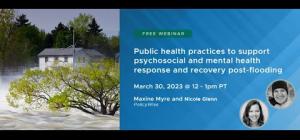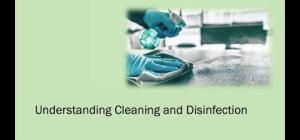
[ARCHIVED] Epidemiologic Evidence of Relationships Between Reproductive and Child Health Outcomes and Environmental Chemical Contaminants
[This content has been archived. We archive content that is dated 10 years or older or content with rapidly evolving evidence or guidance that is now out of date (e.g., COVID-19). If you have feedback, please contact us at [email protected].]
This review summarizes the level of epidemiologic evidence for relationships between prenatal and early life exposure to environmental chemical contaminants and fetal, child, and adult health. Discussion focuses on: fetal loss, intrauterine growth restriction, preterm birth, birth defects, respiratory and other childhood diseases, neuropsychological deficits, premature or delayed sexual maturation, and certain adult cancers linked to fetal or childhood exposures. Environmental exposures considered here include: chemical toxicants in air, water, soil/house dust, foods (including human breast milk), and consumer products. Reports reviewed here included: original epidemiologic studies, literature reviews, expert group reports, meta-analyses, and pooled analyses. Levels of evidence for causal relationships were categorized as sufficient, limited, or inadequate according to predefined criteria.
There was sufficient epidemiological evidence for causal relationships between several adverse pregnancy or child health outcomes and prenatal or childhood exposure to environmental chemical contaminants. See table below
| The Contaminant | Disease Outcome |
|---|---|
| Prenatal high-level methlmercury (CH3Hg) exposure | Delayed developmental milestones and cognitive, motor, auditory, and visual deficits |
| High-level prenatal exposure to polychlorinated biphenyls (PCBs), polychlorinated dibenzofurans (PCDFs), and related toxicants | Neonatal tooth abnormalities, cognitive and motor deficits |
| Maternal active smoking | Delayed conception, preterm birth, fetal growth deficit [PGD] and sudden infant death syndrome [SIDS] |
| Prenatal environmental tobacco smoke (ETS) exposure | Preterm birth |
| Low-level childhood lead exposure | Cognitive deficits and renal tubular damage |
| High-level childhood CH3Hg exposure | Visual deficits |
| High-level childhood exposure to 2, 3, 7, 8-tetrachlorodibenzo-p-dioxin (TCDD) | Chloracne |
| Childhood ETS exposure | SIDS, new-onset asthma, increased asthma severity, lung and middle ear infections, and adult breast and lung cancer |
| Childhood exposure to biomass smoke | Lung infections |
| Childhood exposure to outdoor air pollutants | Increased asthma severity |
There were many relationships supported by limited epidemiologic evidence, ranging from several studies with fairly consistent findings and evidence of dose-response relationships to those where 20 or more studies provided inconsistent or otherwise less than convincing evidence of an association; the latter included childhood cancer and parental or childhood exposures to pesticides. In most cases, relationships supported by inadequate epidemiologic evidence reflect scarcity of evidence as opposed to strong evidence of no effect.
This summary indicates three main needs: (1) where relationships between child health and environmental exposures are supported by sufficient evidence of causal relationships, there is a need for (a) policies and programs to minimize population exposures, and (b) population-based biomonitoring to track exposure levels; (2) for relationships supported by limited evidence, there is a need for targeted research and policy options ranging from ongoing evaluation of evidence to proactive actions; (3) there is a great need for population-based, multidisciplinary, and collaborative research on the many relationships supported by inadequate evidence.








